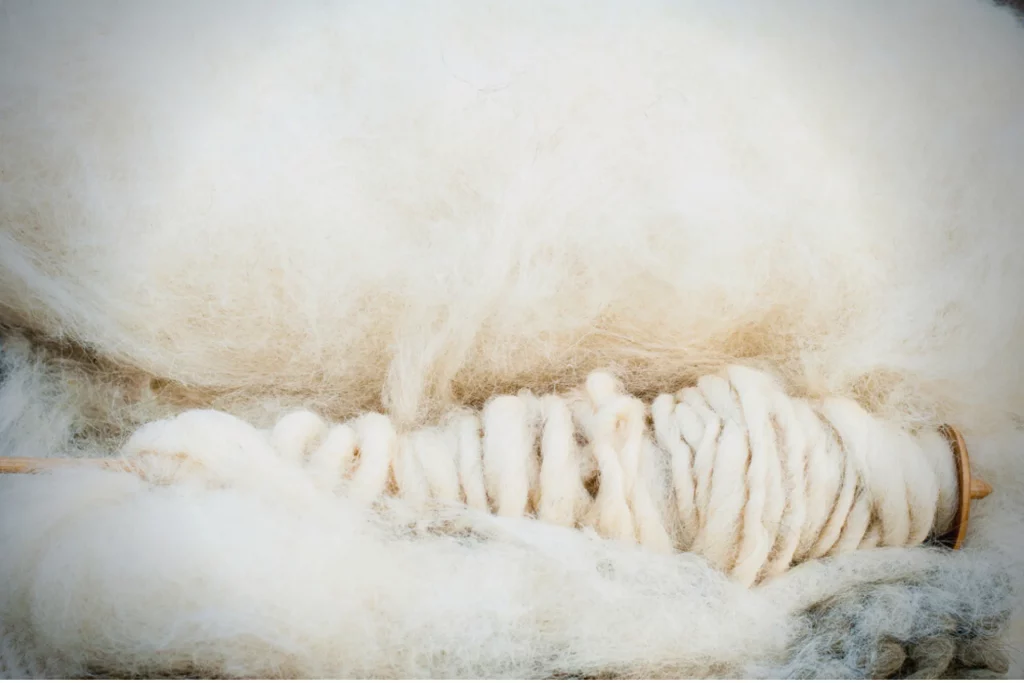Merino wool is a sort of fabric that has been popular for quite some time, but it’s easy to forget about the advantages of Cotton when talking about fabrics. When it comes to clothing, both cotton and merino wool have their uses. However, there are several reasons why you should prefer purchasing Cotton over merino wool for your next buy.
Whether shopping for new sporting clothing or wanting something breathable and pleasant on your skin, we have everything you need. Merino wool and Cotton are two prominent fabrics that are utilized in the production of daily clothes. They share many characteristics in common, but they also have some important differences that distinguish them from one another.
Merino wool is derived from sheep’s wool, whereas Cotton is derived from the fibers of a plant. Both are naturally occurring and grow in various parts of the world. Merino wool is more prevalent for outdoor activities such as hiking or skiing when you require extra warm apparel for cold weather conditions. Both fibers may be found in many various sorts of clothing, including socks, caps, sweaters, and pants, among other things.
This post will detail how these two fibers compare to one another in terms of warmth, durability, and overall comfort.
Table of Contents
What is Merino Wool?

Merino wool is a kind of wool from the merino sheep breed and is used for clothing. Even though this breed originated in Spain, the popularity of its wool has led to it being farmed in a variety of countries across the world, including Australia, New Zealand, and the United States, among others.
On the other hand, this sort of fiber may be found in the hairs on the back ends of sheep! When damp circumstances are present, it has a unique capacity to insulate against cold temperatures since it develops more slowly than other fibers such as acrylic or polyester.
While synthetic fabrics become increasingly rigid with age as a result of moisture damage, wools expand after being saturated, making them extremely comfortable to wear under clothing, especially during the winter months when most people require extra warmth against the chilly air chills that are hitting us all far too frequently these days.
Properties of Merino Wool:
Having established that, let us consider some of the characteristics of wool that have made it such a popular fabric for various clothes, blankets, and rugs throughout the years. We shall focus on wool derived from sheep because it is the most often seen kind.
In contrast to most textiles, fiber wool is a particularly durable substance that also has flame-retardant characteristics.
This fiber is inherently water-repellent owing to the presence of lanolin, a sort of natural wax generated by wool-bearing animals, which coats and prevents the fibers from becoming wet too soon. Lanolin is a form of natural wax generated by wool-bearing animals.
Its sturdy and flexibility make it a highly long-lasting material that may be used for many years without deteriorating quality. When you factor in the fact that wool does not retain smells, it’s no surprise that it is often used in undergarments and footwear.

Aside from being a natural antibacterial, wool also has excellent moisture-wicking properties and is a very breathable material, in addition to being quite insulating even when wet.
Finally, wool is a sustainable material that does not raise many ethical concerns because, in most situations, the animals are handled properly. The shearing of wool does not need the animals to be harmed.
What is Cotton?

Cotton is a fabric that is extensively used in the production of clothes and furnishings and is the main product of the cotton industry.
According to some reports, it has been around since ancient times, when it was initially farmed by Native Americans in Mexico or Peru, according to others.
Others claim that farmers discovered this type of fiber later in history, around the time of the Middle Ages, on the east coast of India, near the river Ganges, where they observed plants with long fibers growing in conditions that were ideal for spinning into thread, which then created piles after being harvested and carded out, making these plants even easier to grow than they had previously been!
Properties of Cotton:
Cotton is a fascinating substance with a high absorbency even though it comes from a hydrophobic plant. Cotton is well-known for its excellent comfort and durability.
Cotton is a plant coated with a wax layer that protects it from extremes when grown naturally.
The wax is subsequently lost when the plant is treated and subjected to the purification process, forming the fibers employed in the fabric production process.
People with sensitive skin and those prone to allergies may like cotton clothing since it is both gentle to the touch and hypoallergenic, making it a fantastic choice.
Cotton is known for its great absorbency, which can concern individuals who wear cotton items in the rain. However, Cotton is a very breathable material in general. It is a sustainable substance, much like wool, because it is derived from plants and is recyclable, just like wool.
Comparison and differences between Wool and Cotton:
Since they are among the softest and perhaps most comfortable materials available, there isn’t much difference in these two textiles’ general composition and performance.
On the other hand, Wool performs far better in general since it has a longer lifespan and is significantly more durable than Cotton.
It is anti-microbial, and odor-resistant are two more essential properties that contribute to the fabric’s lifespan and overall performance.
This material is exceptionally durable and flexible, and it takes less cleaning than other fabrics. It also does not have the characteristic scent of old clothing.
Wool is also flame-retardant; however, Cotton must be treated as flame-retardant; otherwise, it can rapidly catch fire.
Is Cotton Cozier Than Wool?
This is not always the case. Wool is significantly warmer than Cotton in most weaves and knit techniques used to generate the various textiles. On the other hand, Cotton can be knitted into very thick fabrics, giving it a better choice for keeping warm than some wool choices.
The more dense the cloth, the more difficult it is to breathe. Generally speaking, wool is considered the warmer of the two textiles, and it performs well in the winter or late fall when the temp drops significantly.
According to the wool used, the wool may be both warm and irritating, depending on the material. Cotton, on the other hand, does not have such an effect on you. It is a silky-smooth fabric that is suitable for almost any skin tone.
Wool socks are often warmer than cotton shirts, and even when the wool becomes wet, it continues to keep you warm and protected from the cold. After being wet, Cotton loses its ability to provide insulation, and you will feel colder as a result.
When it comes to Breathability, is Cotton superior to wool?
On the other hand, Cotton is generally considered to be the more breathable of the two textiles. We use the term “usually” because there will always be a weaving type or a thickness of Cotton that makes breathing in Cotton problematic.
Cotton, on the other hand, is the most breathable of the fabrics tested. Wool is not featured on some of the cloth breathing lists, even though it will assist you in doing so. Different wool kinds will have varying levels of breathability, and if they are woven tightly, do not anticipate such materials to outperform Cotton in this circumstance.
The lighter cotton strands will be more breathable than the heavier ones and vice versa. Furthermore, the thinner material will allow for more air circulation than the bulkier ones. Cotton is one of the most breathable textiles available, which means that you will always feel cooler when wearing it than when wearing wool or other similar materials.
Wool versus Cotton in terms of Durability:
When it comes to this rivalry, wool outperforms Cotton by a wide margin. The later fibers have a bendability of nearly 2000 times before they break. Alternatively, wool fibers may stretch around 1500 times before they snap and become unusable.
Wool is more durable than Cotton as a result of this feature. In such a case, even if the wool is subjected to harsh treatment and is bent repeatedly, it will preserve its attractive appearance. When you’re wearing socks, you want your socks to be as durable as possible.
In addition, wool contains flame resistant or flame retardant characteristics, making it a more effective firefighting material than Cotton. The fact that it is water repellent means that moisture will not degrade the fabric. Because Cotton becomes stronger when wet, this component of the competition would be a draw.
It comes down to this: if the weather lets it (and there are a few wool alternatives suitable for summer), wool is the superior fabric to choose when you want your clothing item to last for a long time.
Is Cotton or wool more effective at absorbing water?
Wool is reported to absorb more water than Cotton, even though Cotton can absorb up to twenty-seven times its weight in water. The amount of water that is absorbed is not the most important aspect in this case. It is a significant factor, but it is not the most crucial factor distinguishing wool from Cotton.
When wool becomes wet, it retains its insulating properties. You will still be warmer using wool than you would be wearing Cotton, and wool will also dry faster than Cotton does. Cotton is wet; it may develop strength, although strength is not significantly contributor to heat retention.
Even if the fabric is tougher and lasts longer, the insulating characteristics are completely lost when Cotton gets wet. The cold air can pass through the cloth because it has a bridge, which it takes full advantage of.
Wool socks are preferable in colder or rainier weather because they keep your feet drier and warmer than cotton socks, which may be uncomfortable under these conditions.
Is it more expensive to buy wool or Cotton?

Some cotton fibers, like Pima or Egyptian Cotton, can be rather expensive. However, the cost of those substances may be insignificant compared to the costs of cashmere, merino or alpaca wool, and other wool goods.
Cotton may be cultivated worldwide, and some nations, due to their longer growing seasons, produce more Cotton than they do sheep’s wool.
It is because of this supply that the price of the substance is being reduced. Some wool-producing animals can only be sheared once a year, resulting in a limited supply of wool, which drives up the commodity’s price.
The size of the herd is also taken into consideration. Some herds are no longer as huge as they once were, although Cotton may be cultivated in vast quantities.
A combination of these factors and the fact that wool may be extremely smooth and luscious contribute to the high price of wool. The quality of both textiles impacts the pricing of the materials, with Cotton often being on the lower end of the price range for both.
The Environmental Impact of Cotton vs. Wool.
First and foremost, the good news. Both textiles are derived from natural materials. There is, therefore, a minimal requirement for chemical processing during the manufacturing of these textiles. The absence of chemicals ensures that the air, water, and ground are not as contaminated as synthetic materials.
Second, the bad news is that Cotton is not as ecologically benign as wool in environmental impact. Cotton plants require a large amount of water to develop effectively, which translates into being environmentally unsound.
Even if they are part of enormous herds, the animals that develop the hair for the many different varieties of wool require less water than cotton plants to produce the fiber. The amount of water utilized by each product is a major source of worry in this industry.
Cotton, on the other hand, is not to blame because of the method it was produced. The way nature intended, we have to exercise caution when it comes to managing water resources.
Pima Cotton vs. Merino Wool: Which is better?

Merino wool and Pima cotton are well-known and well-loved for their ultimate softness when it comes to clothes. Each of these items is sourced from specialized sources.
To obtain Merino wool, you must first obtain Merino sheep, whose fleece has ultra-fine wool fibers that trap small pockets of air, providing unsurpassed insulation.
Peruvian Pima cotton is derived from the plant that has the same name, which yields extra-long-staple cotton fibers that, when weaved, have a satiny quality.
Merino wool sweaters offer a sumptuous feel and keep you warm in the winter (without adding bulk) and cool in the summer (without adding bulk).
Merino wool’s breathability and wicking abilities keep you dry, which minimizes the accumulation of odor-causing germs that thrive in wet settings. As a result, it is a popular option for light base layers and socks for hikers, anglers, and other outdoor enthusiasts who like being active.
In the same way that other varieties of Cotton are utilized in the same wide spectrum of clothes, Pima cotton is used to give each item a satiny smoothness. Pima cotton shirts, pullovers, and knit sweaters are unsurpassed in their ability to evoke a sense of relaxed elegance.
Conclusion
The answer to this question may not be as straightforward as you may expect. Even though both Cotton and wool are excellent materials, one may be more suitable for your needs than the other depending on what you want to use it for.
Suppose warmth, softness, and breathability are vital attributes in a fabric. In that case, Cotton is the greatest choice since it can keep the user warmer than wool while also being more pleasant against sensitive skin. Cotton is also more affordable than wool.

